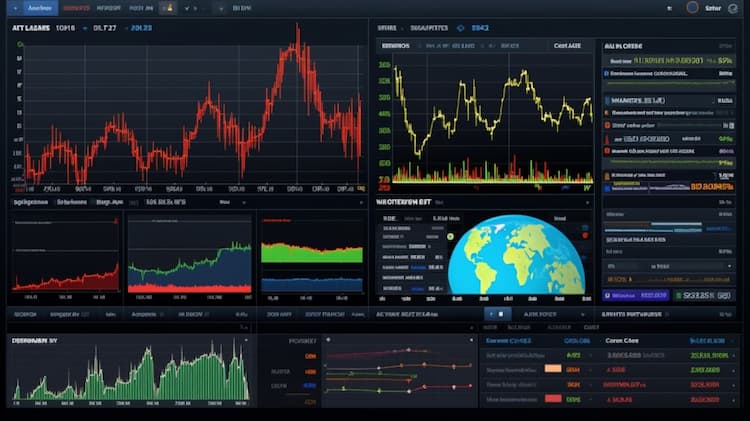
What is the INDY ETF?
INDY ETF: Overview
In the dynamic world of finance, where countless investment options and strategies are available, one often encounters terms like exchange-traded funds (ETFs) and financial instruments. These concepts form the foundation of modern investment portfolios, providing individuals and institutions with opportunities to diversify and potentially generate returns. In this article, we delve into the essence of INDY ETF, exploring its features, benefits, and the underlying principles that guide its performance.
INDY ETF: Index Tracking and Investment Strategy
At its core, INDY ETF seeks to mirror the performance of the Nifty 50 IndexTM, an indicator of the top 50 companies with the highest free float market capitalization in the Indian securities markets. This index, meticulously curated by NSE Indices Ltd., encompasses prominent firms from various industries, with a significant representation from the financial sector as of March 31, 2023. The strategy employed here is that of indexing, an approach that differs from traditional active management. Instead of trying to outperform the index, INDY ETF aims to replicate its results by holding a portfolio that closely resembles the index's composition.
[Image placeholder]
INDY ETF: Representative Sampling and Investment Diversification
One fascinating aspect of INDY ETF 's investment methodology is its use of a representative sampling strategy. This technique involves investing in a carefully selected group of securities that collectively mimic the investment profile of the underlying Nifty 50 IndexTM. These securities share key characteristics such as market capitalization, industry weightings, and fundamental traits. This approach enables INDY ETF to achieve a balance between diversification and cost efficiency. While it may not hold all the securities within the index, the chosen sample aims to replicate the index's performance closely.
INDY ETF: Asset Allocation and Risk Management
Diving deeper into INDY ETF 's strategy, we discover its commitment to maintaining a portfolio that aligns with the Nifty 50 IndexTM. This translates to an investment of at least 80% of its assets in the component securities of the index. Additionally, INDY ETF may allocate up to 20% of its assets to futures, options, swap contracts, and other financial instruments, enhancing its ability to track the index. This blend of holdings emphasizes risk management while ensuring alignment with the index's movements.
Conclusion
In conclusion, INDY ETF serves as an exemplary illustration of the world of financial instruments and ETFs. By meticulously tracking the Nifty 50 IndexTM and employing a representative sampling strategy, INDY ETF offers investors the opportunity to engage in a diversified investment approach while mirroring the performance of the Indian equity market's top 50 companies. It is essential to recognize that INDY ETF doesn't provide investment advisory services, and individuals should conduct thorough research or consult professionals before making investment decisions.
Disclaimer: This article does not provide investment advisory services and should not be construed as financial advice. Investment decisions should be made based on individual research and consultation with qualified financial professionals.
Sources:
Prospectus of INDY ETF
NSE Indices Ltd.
[Source 1 for Nifty 50 IndexTM composition and changes]
[Source 2 for ETF indexing strategy]
[Source 3 for representative sampling in ETFs]
[Source 4 for ETF asset allocation and risk management]
INDY ETF issuer
INDY ETF official page
INDY quote and analysis
Discover the top holdings, correlations, and overlaps of ETFs using our visualization tool.
Our app allows you to build and track your portfolio.
To learn more about the INDY iShares India 50 ETF, access our dedicated page now.
FAQ
What is the INDY ETF?
INDY ETF, is an exchange-traded fund that provides investors with exposure to companies operating in the relevant sector.
What is the underlying index that the INDY ETF aims to track?
INDY ETF aims to track the performance of a specific index, which includes companies involved in various aspects of the relevant industry.
What types of companies are included in the INDY ETF?
INDY ETF includes companies from the relevant industry, which may consist of specialized firms, equipment manufacturers, and other related entities.
How does the INDY ETF work?
INDY ETF functions by pooling investors' capital to purchase a diversified portfolio of related stocks, aiming to replicate the performance of the underlying index.
What are the advantages of investing in the INDY ETF?
Investing in the INDY ETF offers exposure to a specialized sector with potential for growth and innovation. It allows investors to diversify within the industry, which could experience significant advancements and expansion in the future.






